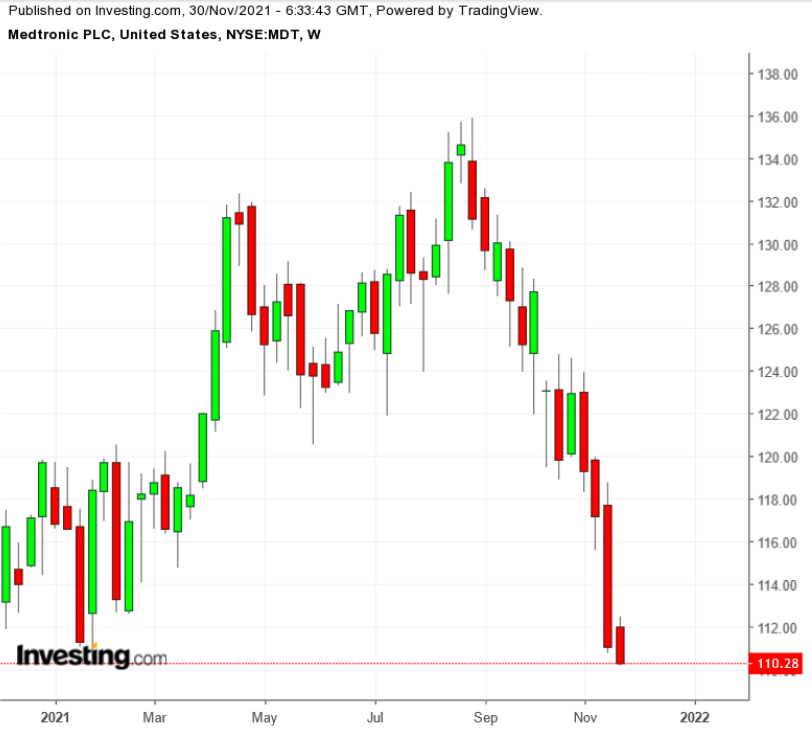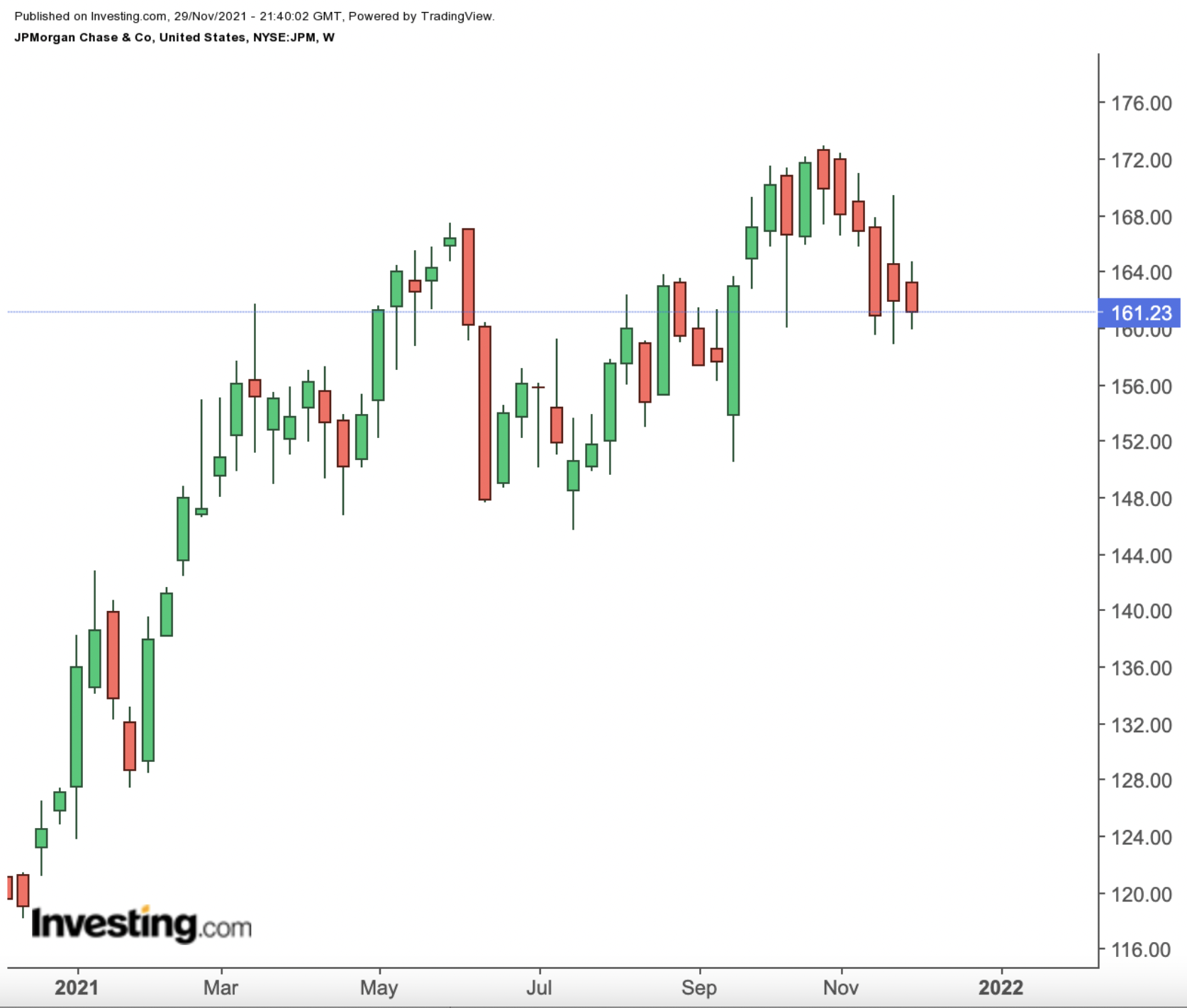The emergence of the new Omicron COVID variant has shown investors that pandemic-related volatility hasn’t yet run its course. Therefore, when considering what's worth betting on, it makes sense to look toward larger companies that have safer paths to growth.
If you are a buy-and-hold investor, large-cap dividend stocks are among the safest bets to ride through this volatility. These companies tend to have strong business models that allow them to regularly generate cash flows for their shareholders. Strong balance sheets, essential products and services, and large global footprints also help provide investors with considerable annualized returns.
In addition, soaring inflation and rising yields make high-dividend payers more compelling for long-term investors who want to preserve the value of their fixed income. Below, we've identified three such stocks:
1. Medtronic
Health-care stocks are considered relatively safe, regarded as solid income producers.
Medtronic (NYSE:MDT) is a lesser known healthcare stock that we like due to the company’s strong market position and its hefty payouts. The world’s biggest medical device maker controls 50% of the global pacemaker market. It’s also a leader in products that assist with spinal surgeries and diabetes care.

No matter which way the economy goes, stocks like Medtronic will continue to churn out cash. The Dublin, Ireland-based company has a long-term strategy to pay out 50% of its free cash flow to shareholders as dividends. With a 2.27% annual yield, the company pays a quarterly dividend of $0.63 a share. That payout, on average, has increased more than 10% per year during the past five years.
Medtronic last week reported sales that were short of Wall Street’s expectations and slashed its outlook for revenue growth due to the COVID-19 resurgence and healthcare staffing challenges.
But this weakness is temporary and, in our view, a good buying opportunity for dividend investors. The company is one of those strong, inflation-fighting stocks with a clear lead in the medical device business and the capability to rebound once the pandemic is contained.
2. Texas Instruments
Tech giant Texas Instruments (NASDAQ:TXN), which produces electronic products, including chips that are used in many diversified industries, is another solid name to add to your income portfolio.
TI gets the biggest chunk of its sales from manufacturers of industrial equipment. It also produces semiconductors that go into everything from vehicles to home electronics and space hardware.

But the biggest attraction for long-term investors is the company’s dividend program, which is growing each year. With an annual dividend yield of 2.4%, TXN currently pays $1.15 a share quarterly, which has grown more than 20% per year during the past five years.
With its payout ratio of just over 50%, TI is in a comfortable position to continue to hike its dividend going forward. In addition, the company’s long-term growth prospects are bright with the amount of electronics being added to cars and machinery. Unlike many chip-makers that mostly outsource the manufacturing of their products, Dallas-based Texas Instruments has factories that accommodate about 80% of its own needs.
3. JPMorgan Chase
Banks are purely a cyclical trade, tied very closely to the direction of the economy. Right now, those factors have become quite favorable for banking stocks, given the prospects for higher interest rates and robust economic growth.
Among banking shares, we like JPMorgan Chase (NYSE:JPM), the largest U.S.-based lender for income investors, due to the strength of its balance sheet and the quality of its operations.

In its most recent earnings report, JPM delivered strong results as the economy continues to show growth—despite the dampening effect of COVID variants and supply-chain disruptions.
During the third-quarter, the New York-based lender posted a 52% jump in investment-banking fees, boosting its bottom-line profitability. Combined with the government’s massive infrastructure spending plans and a gradual tapering of monetary stimulus, banks could see demand for credit pick up substantially next year as companies and individuals use up the liquidity accumulated during the pandemic.
With an annual dividend yield of 2.47%, JPM pays $1 a share quarterly dividend, which has grown about 18% per year during the past five-year period.
